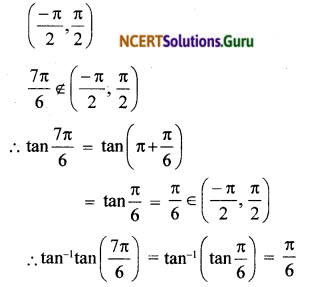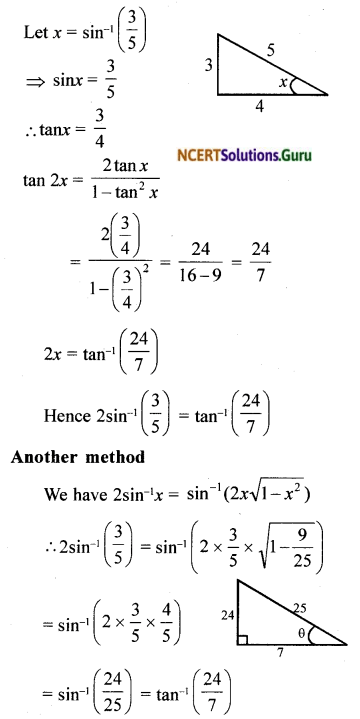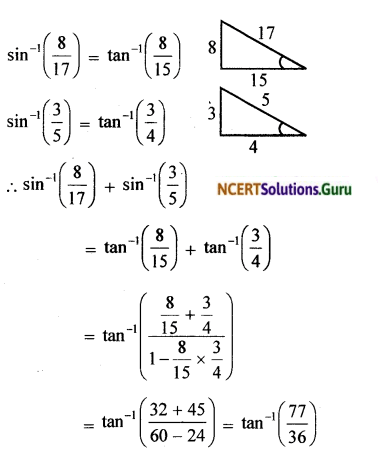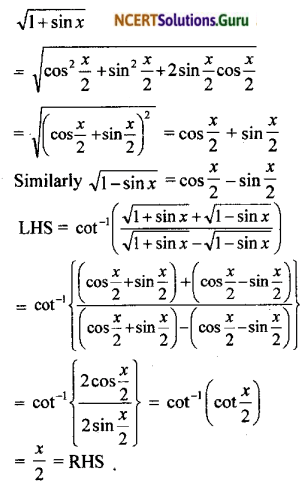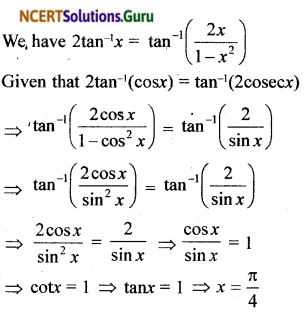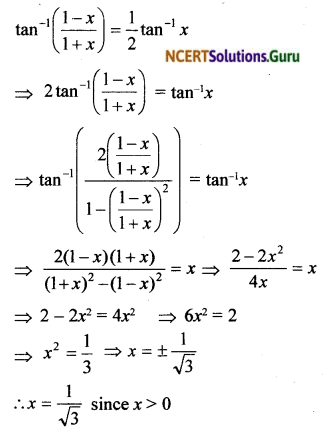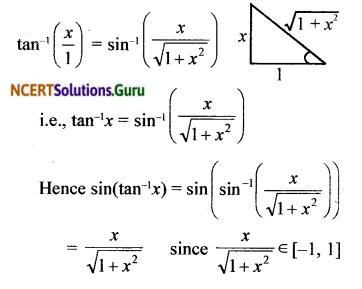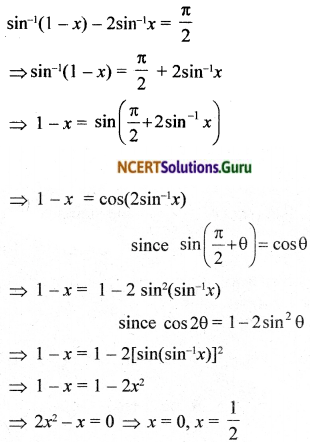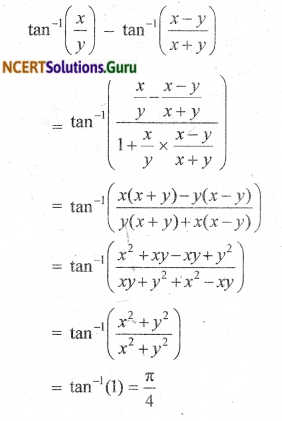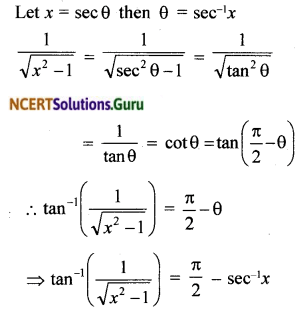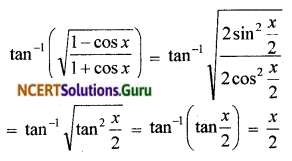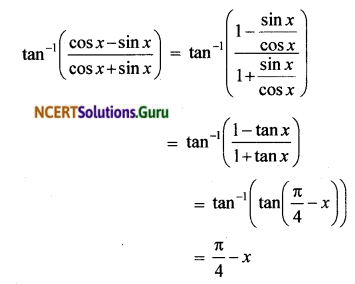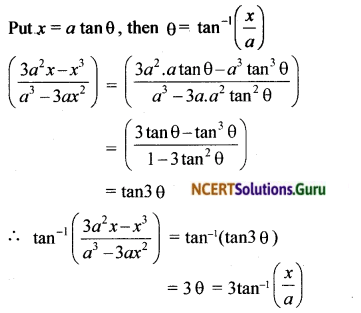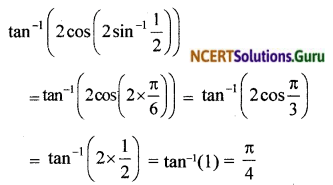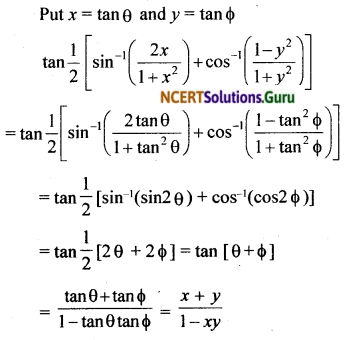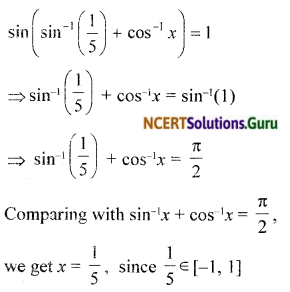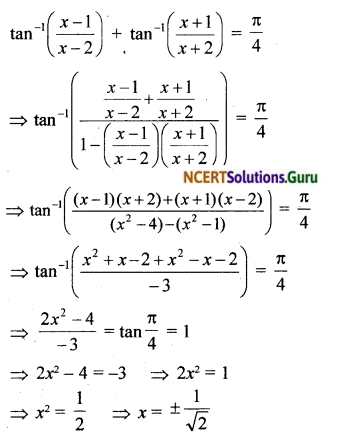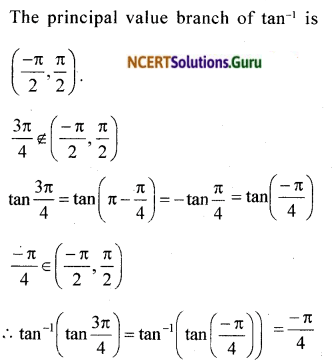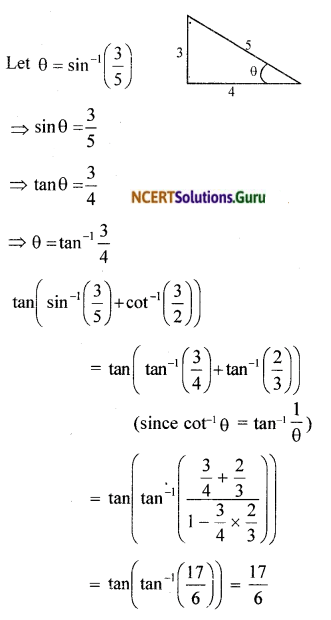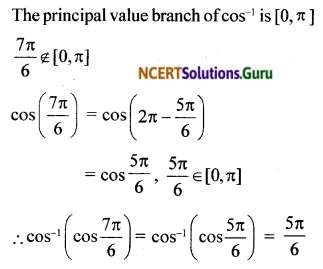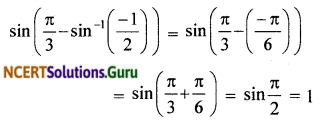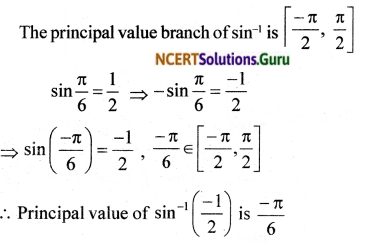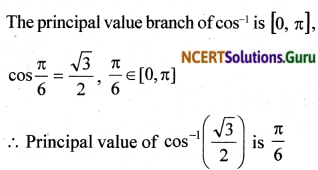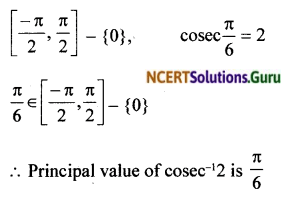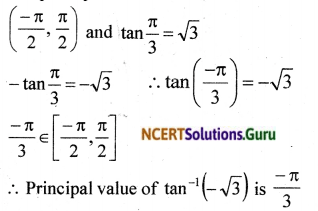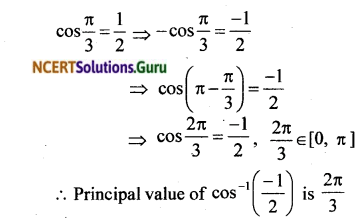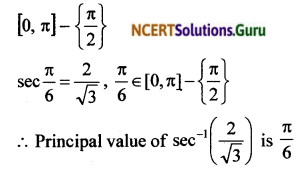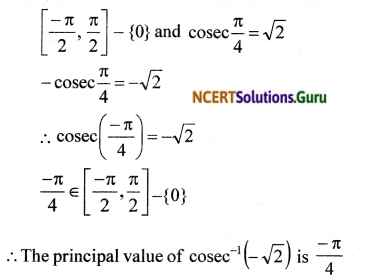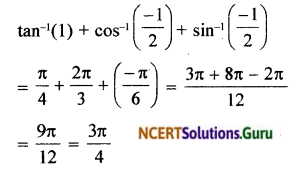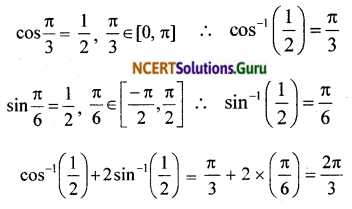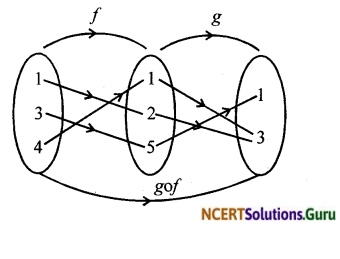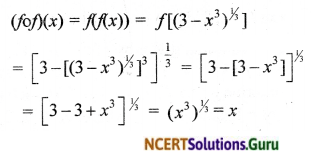NCERT Solutions for Class 12 Maths Chapter 3 Matrices Ex 3.2
These NCERT Solutions for Class 12 Maths Chapter 3 Matrices Ex 3.2 Questions and Answers are prepared by our highly skilled subject experts. https://mcq-questions.com/ncert-solutions-for-class-12-maths-chapter-3-ex-3-2/
NCERT Solutions for Class 12 Maths Chapter 3 Matrices Exercise 3.2
![]()
Ex 3.2 Class 12 Question 1.
Let
A = \(\left[\begin{array}{ll} 2 & 4 \\ 3 & 2 \end{array}\right]\)
B = \(\left[\begin{array}{ll} 1 & 3 \\ -2 & 5 \end{array}\right]\)
C = \(\left[\begin{array}{ll} -2 & 5 \\ 3 & 4 \end{array}\right]\)
F ind each of the following:
i. A + B
ii. A – B
iii. 3A – C
iv. AB
v. BA
Solution:

Class 12 Maths 3.2 Question 2.
Compute the following
i. \(\left[\begin{array}{cc}
a & b \\
-b & a
\end{array}\right]+\left[\begin{array}{ll}
a & b \\
b & a
\end{array}\right]\)
ii. \(\left[\begin{array}{cc}
a^{2}+b^{2} & b^{2}+c^{2} \\
a^{2}+c^{2} & a^{2}+b^{2}
\end{array}\right]+\left[\begin{array}{cc}
2 a b & 2 b c \\
-2 a c & -2 a b
\end{array}\right]\)
iii. \(\left[\begin{array}{ccc}
-1 & 4 & -6 \\
8 & 5 & 16 \\
2 & 8 & 5
\end{array}\right]+\left[\begin{array}{ccc}
12 & 7 & 6 \\
8 & 0 & 5 \\
3 & 2 & 4
\end{array}\right]\)
iv. \(\left[\begin{array}{cc}
\cos ^{2} x & \sin ^{2} x \\
\sin ^{2} x & \cos ^{2} x
\end{array}\right]+\left[\begin{array}{cc}
\sin ^{2} x & \cos ^{2} x \\
\cos ^{2} x & \sin ^{2} x
\end{array}\right]\)
Solution:

![]()
Exercise 3.2 Class 12 Maths Question 3.
Compute the indicated products.

Solution:

iii. Number of columns of first matrix = Number of rows of second matrix.


Class 12 Maths Ncert Solutions Chapter 3 Matrices Exercise 3.2 Question 4.
If A = \(\left[\begin{array}{ccc}
1 & 2 & -3 \\
5 & 0 & 2 \\
1 & -1 & 1
\end{array}\right]\), B = \(=\left[\begin{array}{ccc}
3 & -1 & 2 \\
4 & 2 & 5 \\
2 & 0 & 3
\end{array}\right]\) and C = \(\left[\begin{array}{ccc}
4 & 1 & 2 \\
0 & 3 & 2 \\
1 & -2 & 3
\end{array}\right]\) then compute (A + B) and (B – C). Also, verify that A + (B – C) = (A+ B) – C.
Solution:

![]()
Class 12 Ex 3.2 Question 5.
If A = \(\left[\begin{array}{ccc}
\frac{2}{\dot{3}} & 1 & \frac{5}{3} \\
\frac{1}{3} & \frac{2}{3} & \frac{4}{3} \\
\frac{7}{3} & 2 & \frac{2}{3}
\end{array}\right]\) and B = \(\left[\begin{array}{ccc}
\frac{2}{5} & \frac{3}{5} & 1 \\
\frac{1}{5} & \frac{2}{5} & \frac{4}{5} \\
\frac{7}{5} & \frac{6}{5} & \frac{2}{5}
\end{array}\right]\), then compute 3A – 5B.
Solution:

Question 6.
Simplify cos θ\(\left[\begin{array}{ll}
\cos \theta & \sin \theta \\
-\sin \theta & \cos \theta
\end{array}\right]\) + sin θ\(\left[\begin{array}{cc}
\sin \theta & -\cos \theta \\
\cos \theta & \sin \theta
\end{array}\right]\)
Solution:

Question 7.
Find X and Y, if
i. X + Y = \(\left[\begin{array}{ll}
7 & 0 \\
2 & 5
\end{array}\right]\) and X – Y = \(\left[\begin{array}{ll}
3 & 0 \\
0 & 3
\end{array}\right]\)
ii. 2X + 3Y = \(\left[\begin{array}{ll}
2 & 3 \\
4 & 0
\end{array}\right]\) and 3X + 2Y = \(\left[\begin{array}{ll}
2 & -2 \\
-1 & 5
\end{array}\right]\)
Solution:

ii. 2X + 3Y = \(\left[\begin{array}{ll}
2 & 3 \\
4 & 0
\end{array}\right]\) …… (1)
3X + 2Y = \(\left[\begin{array}{ll}
2 & -2 \\
-1 & 5
\end{array}\right]\) …… (2)

![]()
Question 8.
Find X, if Y = \(\left[\begin{array}{ll}
3 & 2 \\
1 & 4
\end{array}\right]\) and 2X + Y = \(\left[\begin{array}{cc}
1 & 0 \\
-3 & 2
\end{array}\right]\).
Solution:

Question 9.
Find x and y, if 2\(\left[\begin{array}{ll}
1 & 3 \\
0 & x
\end{array}\right]\) + \(\left[\begin{array}{cc}
y & 0 \\
1 & 2
\end{array}\right]\) = \(\left[\begin{array}{ll}
5 & 6 \\
1 & 8
\end{array}\right]\)
Solution:
2\(\left[\begin{array}{ll}
1 & 3 \\
0 & x
\end{array}\right]\) + \(\left[\begin{array}{cc}
y & 0 \\
1 & 2
\end{array}\right]\) = \(\left[\begin{array}{ll}
5 & 6 \\
1 & 8
\end{array}\right]\) ⇒ \(\left[\begin{array}{ll}
2 & 6 \\
0 & 2x
\end{array}\right]\) + \(\left[\begin{array}{cc}
y & 0 \\
1 & 2
\end{array}\right]\) = \(\left[\begin{array}{ll}
5 & 6 \\
1 & 8
\end{array}\right]\)
⇒ \(\left[\begin{array}{cc}
2+y & 6 \\
1 & 2 x+2
\end{array}\right]\) = \(\left[\begin{array}{ll}
5 & 6 \\
1 & 8
\end{array}\right]\)
Equating the corresponding elements, we get
2 + y = 5 and 2x + 2 = 8
⇒ y = 3 and 2x = 6 ⇒ x = 3
∴ x = 3, y = 3
![]()
Question 10.
Solve the equation for x, y, z and t, if 2\(\left[\begin{array}{ll}
x & z \\
y & t
\end{array}\right]\) + 3\(\left[\begin{array}{ll}
1 & -1 \\
0 & 2
\end{array}\right]\) = 3\(\left[\begin{array}{ll}
3 & 5 \\
4 & 6
\end{array}\right]\)
Solution:
2\(\left[\begin{array}{ll}
x & z \\
y & t
\end{array}\right]\) + 3\(\left[\begin{array}{ll}
1 & -1 \\
0 & 2
\end{array}\right]\) = 3\(\left[\begin{array}{ll}
3 & 5 \\
4 & 6
\end{array}\right]\)
⇒ \(\left[\begin{array}{ll}
2x & 2z \\
2y & 2t
\end{array}\right]\) + \(\left[\begin{array}{cc}
3 & -3 \\
0 & 6
\end{array}\right]\) = \(\left[\begin{array}{ll}
9 & 15 \\
12 & 18
\end{array}\right]\)
⇒ \(\left[\begin{array}{cc}
2x+3 & 2z-3 \\
2y & 2t+6
\end{array}\right]\) = \(\left[\begin{array}{ll}
9 & 15 \\
12 & 18
\end{array}\right]\)
⇒ 2x + 3 = 9, 2z – 3 = 15
2y = 12, 2t + 6 = 18 ⇒ x = 3, y = 6, t = 6, z = 9
Question 11.
If x\(\left[\begin{array}{l}
2 \\
3
\end{array}\right]\) + y\(\left[\begin{array}{l}
-1 \\
1
\end{array}\right]\) = \(\left[\begin{array}{l}
10 \\
5
\end{array}\right]\)
Solution:
x\(\left[\begin{array}{l}
2 \\
3
\end{array}\right]\) + y\(\left[\begin{array}{l}
-1 \\
1
\end{array}\right]\) = \(\left[\begin{array}{l}
10 \\
5
\end{array}\right]\) ⇒ \(\left[\begin{array}{l}
2 x \\
3 x
\end{array}\right]+\left[\begin{array}{c}
-y \\
y
\end{array}\right]=\left[\begin{array}{c}
10 \\
5
\end{array}\right]\) ⇒ \(\left[\begin{array}{l}
10 \\
5
\end{array}\right]\)
⇒ 2x – y = 10, 3x + y = 5
Solving, we get x = 3, y = – 4
![]()
Question 12.
Given
\(3\begin{bmatrix} x & \quad y \\ z & \quad w \end{bmatrix}=\begin{bmatrix} x & \quad 6 \\ -1 & \quad 2w \end{bmatrix}+\begin{bmatrix} 4 & \quad x+y \\ z+w & 3 \end{bmatrix} \)
find the values of x,y,z and w.
Solution:
\(3\begin{bmatrix} x & \quad y \\ z & \quad w \end{bmatrix}=\begin{bmatrix} x & \quad 6 \\ -1 & \quad 2w \end{bmatrix}+\begin{bmatrix} 4 & \quad x+y \\ z+w & 3 \end{bmatrix} \)
⇒ \(\begin{bmatrix} 3x & \quad 3y \\ 3z & \quad 3w \end{bmatrix}=\begin{bmatrix} x+4 & \quad 6+x+y \\ -1+z+w & \quad 2w+3 \end{bmatrix}\)
⇒ 3x = x + 4 ⇒ x = 2
and 3y = 6 + x + y ⇒ y = 4
Also, 3w = 2w + 3 ⇒ w = 3
Again, 3z = – 1 + z + w
⇒ 2z = – 1 + 3
⇒ 2z = 2
⇒ z = 1
Hence x = 2 ,y = 4, z = 1, w = 3.
Question 13.
If F(x) = \(\left[\begin{array}{ccc}
\cos x & -\sin x & 0 \\
\sin x & \cos x & 0 \\
0 & 0 & 1
\end{array}\right]\) then show that F(x).F(y) = F(x+y)
Solution:

Question 14.
Show that

Solution:

![]()
Question 15.
Find A² – 5A + 6I, if A = \(\left[\begin{array}{ccc}
2 & 0 & 1 \\
2 & 1 & 3 \\
1 & -1 & 0
\end{array}\right]\)
Solution:

Question 16.
If A = \(\left[\begin{array}{lll}
1 & 0 & 2 \\
0 & 2 & 1 \\
2 & 0 & 3
\end{array}\right]\) Prove that A³ – 6A² + 7A + 2I = 0
Solution:

Question 17.
If \(\left[\begin{array}{ll}
3 & -2 \\
4 & -2
\end{array}\right]\) and I = \(\left[\begin{array}{ll}
1 & 0 \\
0 & 1
\end{array}\right]\) find k so that A² = kA – 2I
Solution:

![]()
Question 18.
If A = \(\left[\begin{array}{cc}
0 & -\tan \frac{\alpha}{2} \\
\tan \frac{\alpha}{2} & 0
\end{array}\right]\) and I is the identity matrix of order 2, show that I + A = (I – A)\(\left[\begin{array}{cc}
\cos \alpha & -\sin \alpha \\
\sin \alpha & \cos \alpha
\end{array}\right]\)
Solution:

Question 19.
A trust has Rs 30,000 that must be invested in two different types of bonds. The first bond pays 5% interest per year and second bond pays 7% interest per year. Using matrix multiplication, determine how to divide Rs 30,000 among the two types of bond if the trust fund obtains an annual total interest of
(a) Rs 1800
(b) Rs 2000
Solution:
(a) Let ₹ and ₹ y be the amount invested in two bonds such that x + y = 30000 … (1)
Then [x y]\(\left[\begin{array}{l}
5 \% \\
7 \%
\end{array}\right]\) = [1800]
⇒ [x × 5% + y x 7%] = [1800]
⇒ \(\frac{x \times 5}{100}+\frac{y \times 7}{100}\)
⇒ 5x + 7y = 180000 … (2)
(1) x 5 = 5x + 5y = 150000 … (3)
Subtracting (3) from (2), we get
2y = 30000 ⇒ y = 15000
From (1), we get x= 15000
∴ To get an interest of ₹ 1800, the amount to be invested in each bonds are ₹ 15000 and ₹ 15000
(b) Here x + y = 30000 … (4)
[x y]\(\left[\begin{array}{l}
5 \% \\
7 \%
\end{array}\right]\) = 2000
⇒ \(\frac{x \times 5}{100}+\frac{y \times 7}{100}\) = 2000
⇒ 5x + 7y = 200000 … (5)
(4) x 5 ⇒ 5x + 5y = 150000 …. (6)
Subtracting (6) from (5), we get
2y = 50000 ⇒ y = 25000
From (4) we get x = 5000
To get an interest of ₹ 2000, the amount to be invested in each bonds is ₹ 5000 and ₹ 25000.
Question 20.
The bookshop of a particular school has 10 dozen chemistry books, 8 dozen physics books, 10 dozen economics books. Their selling prices are ₹ 80, ₹ 60 and ₹ 40 each respectively. Find the total amount the bookshop will receive from selling all the books using matrix algebra.
Solution:
1 dozen = 12
∴ 10 dozen chemistry books = 10 x 12 = 120
8 dozen physics books = 8 x 12 = 96
10 dozen economics books = 10 x 12 = 120
Total amount the bookshop will receive
= [120 96 120]\(\left[\begin{array}{l} 80 \\ 60 \\ 40 \end{array}\right]\)
= [120 x 80 + 96 x 60 + 120 x 40]
= [9600 + 5760 + 4800] = ₹ 20160
Assume X, Y, Z, W and P are matrices of order 2 x n, 3 x k, 2 x p, n x 3 and p x k, respectively. Choose the correct answer in Exercises 21 and 22.
![]()
Question 21.
The restriction on n, k and p so that PY + WY will be defined are
a. k = 3, p = n
b. k is arbitrary, p = 2
c. p is arbitrary, k = 3
d. k = 2, p = 3
Solution:
Answer:
PY + WY = (P + W)Y
⇒ order of P = order of W
⇒ p k = n x 3
⇒ p = n and k = 3
Question 22.
If n = p, then the order of the matrix 7X – 5Z is
a. p x 2
b. 2 x n
c. n x 3
d. p x n
Solution:
Order of X = 2 x n
Order of Z = 2 x p = 2 x n ∵ (n = p)
∴ Order of 7X – 5Z is order of X or order of Z.
NCERT Solutions for Class 12 Maths Chapter 3 Matrices Ex 3.2 Read More »















